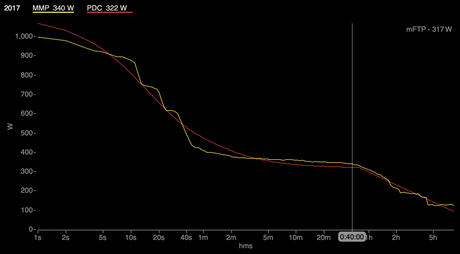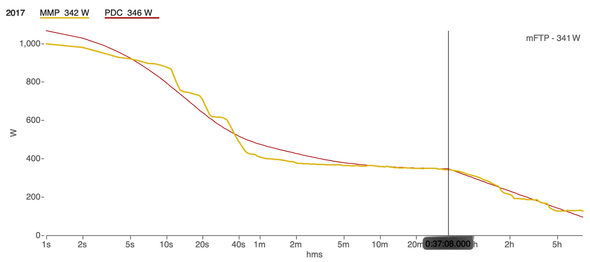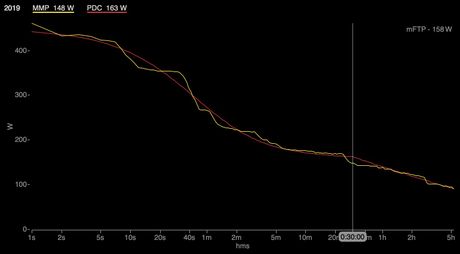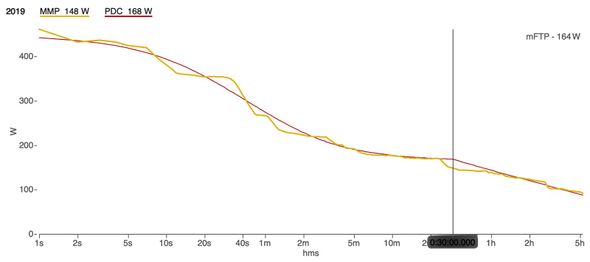Introducing the WKO5 Power Duration Model V2
Overview
In WKO4 Dr. Andy Coggan introduced the Power Duration Model (PDM) to the world. The PDM was developed to provide quantitative insight into an individual’s unique abilities and the physiological determinants thereof. You can read more about the basis of the PDM here.
Over the past four years, the PDM has helped numerous coaches and athletes reinvent their training and improve results. We have also consistently seen certain athlete training and testing habits for which we feel the PDM should do a better job. It should come as no surprise that four additional years of experience and learning have led to a realization that an improvement can be—and, as of now, has been—made. Some athletes who test at a very limited number of different durations, as well as athletes who don’t test at longer durations out to approximately one hour, sometimes are given an mFTP (modeled functional threshold power) that does not reflect their true capability. For years we suggested, prodded, and encouraged users to test longer durations, but as all coaches know, asking your athlete to do a 40- to 60-minute test does not always go over so well. Over the past two years, we began exploring ways to utilize the PDM to better estimate the capacity of those athletes who don’t have maximal data all the way through approximately an hour. This led us to WKO5
and the Power Duration Model V2.
What is the Power Duration Model V2?
The Power Duration Model V2 was developed to allow WKO to deliver the same high-quality analytics to athletes who regularly test at a good variety of durations (these athletes will only see a small difference, if any, in their model) while also doing a better job of modeling for athletes who don’t typically test as frequently at a good variety of durations.
Modeled FTP is found on the Power Duration Curve at the plateau where an athlete can maintain the same steady-state power but declines slightly as power derived from FRC decreases with time. The goal is to identify where that plateau occurs.
Two cases where we learned PDM V1 in WKO4 can be improved are as follows:
Case 1
This athlete has not done enough testing between 30 seconds and 5 minutes. Take a look at the athlete’s power-duration curve in both WKO4 and WKO5, shown in the screenshots below. In WKO4 near TTE, the PD curve is 18 watts (340-322) below the plateau where the athlete can maintain steady-state power. In WKO5, the difference between mFTP (341 watts) and the PD Curve (346 watts) is the 5 watts of power derived from FRC.
Case 2
This athlete has not done maximal efforts between 21 and 60 minutes. In WKO4, the whole left half of the PD curve is pulled downward because of the dip between 21 and 60 minutes, and it does not properly represent the plateau where the athlete can maintain steady-state power. WKO5’s model is much more accurate, and the difference between mFTP (164 watts) and the PD curve (168 watts) is the 4 watts of power derived from FRC.
The Key Benefits of the Power Duration Model V2 in WKO5
There are several key benefits of the Power Duration Model V2:
- It retains the same quality analytics, metrics, and outputs for athletes utilizing a good variety of testing durations, including longer ones up to approximately one hour, which is still the preferred method of testing and training targeting.
- It improves model estimates for athletes with shorter maximal efforts or tests.
The WKO5 Basic Views contain a dashboard named Power Duration Model. In that dashboard is an FTP Review chart that compares the Power Duration Model V2 against a few well-known shortcut methods that give a rule-of-thumb estimation of your FTP. Combined with a visual inspection of your mean max power curve and PD curve (the “PD Curve with Metrics” chart on the same dashboard is a great place to start), you can confirm that PDM V2 is an upgrade that helps you dial in your training levels with more confidence than ever.
Throughout our process of vetting the new model, we’ve determined that whether you use iLevels or classic power levels, the model-derived mFTP in V2 gives the best results when used to prescribe workouts of the appropriate intensity level. In fact, we believe that using iLevels driven by the Power Duration Model V2 is the best way to determine individualized power training zones based on each athlete’s unique fitness metrics.
About TrainingPeaks WKO
WKO is a power data analytics engine built to unlock the secrets of your endurance training and performance data. Click here
for more information and to download your free trial of WKO today.




